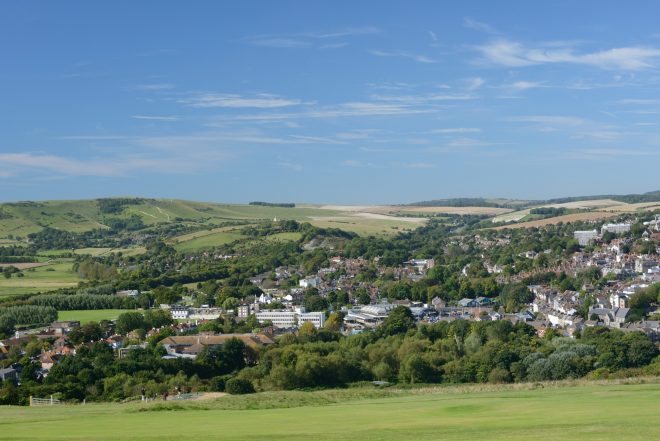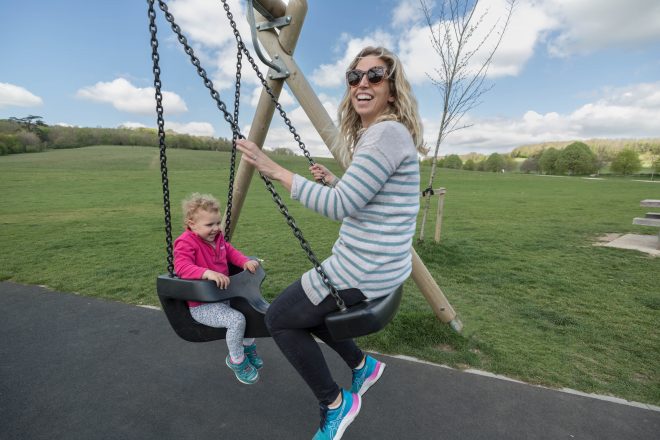Why planning is the beating heart of National Parks
April 22, 2024
Think of “National Parks” and I doubt planning is the first thing that springs to most people’s minds. Beautiful views, wildlife, access trails, country pubs and castles, perhaps.
Yet planning lies at the very heart of everything a National Park is. In my opinion, it’s the glue that holds everything together, providing the framework for us to be able to deliver our purposes and duty.
Planning powers are a core element of the conservation and enhancement of these treasured landscapes, as well as the bedrock for creating more opportunities for people to enjoy its special qualities.
They’re particularly important in countries like England where National Parks, contrary to what some may believe, are far from being “nature’s last wildernesses” like some of the American National Parks. They’re a place where people and nature come together and that’s particularly true in a place like the South Downs, which is full of vibrant, thriving market towns and villages, covers three busy counties and is home to around 115,000 people – the highest population of any National Park in the UK. Planning powers are part of the support system to ensure rural economies can grow sustainably, jobs are created, and there’s a high-quality built environment that supports people’s health and wellbeing and, furthermore, finds space for nature. Ultimately, when you boil it down to the basics, we principally want to help create prosperous places where people are happy and want to live, work and visit.
Planning powers have been a feature of National Park Authorities ever since National Parks were created in the 1940s, with the 1945 Dower Report laying the foundations. The “crucial importance” of the planning function of National Park Authorities was recognised in a significant review of National Parks in 1991. Consequently, the Environment Act 1995 was clear that independent National Park Authorities should be the sole local planning authority for their areas, with full planning powers.

Our planning functions are particularly important to recognise this year as we mark the 75th anniversary since National Parks were created. Indeed, they’re actually one of the few statutory powers we have and are arguably more needed than ever as land use and land management become more closely aligned.
We are one of the largest Local Planning Authorities in the UK, determining more applications than most London boroughs. Our planning powers are not about stopping development. Far from it. In fact, 90 per cent of the applications we receive are approved. Our function revolves around the right development, in the right place, fostering a landscape-led approach and that’s why the South Downs Local Plan is so vital.
Moving on from why planning powers are important, what’s been achieved in the South Downs National Park? There are numerous highlights over the past 14 years for a comparatively young National Park, so I’ll just touch on a few of the most eminent ones.
We have an award-winning South Downs Local Plan that led on items such as Biodiversity Net Gain (BNG) and Ecosystems Services years before they were rolled out in national policy. This early innovation is now paying dividends as mandatory BNG has come into play. The landmark legal agreement last year at Iford Estate, signing over 31 hectares of land to nature recovery, is the first of many parcels of land that will be dedicated for BNG provision. As well as larger-scale nature recovery, there are multiple examples in recent years of development improving both the size and quality of wildlife habitats. Good planning at a local and regional scale will be absolutely vital if the country wants to achieve its biodiversity and climate targets.
It’s fundamental to note that our planning function doesn’t happen in isolation. It’s a collaboration, with people and communities sitting at the heart of the process. I’m proud that 44 Neighbourhood Development Plans have now been “made” – each one led by the community, for the community.
The Community Infrastructure Levy (CIL) is one my favourite – and most rewarding – aspects of planning here in the South Downs National Park. We are the only National Park to have it and it’s a key delivery mechanism with massive public benefit. Since 2017 we have raised more than £12m – every penny spent on doing good in the National Park. Hundreds of projects have reaped the rewards, from new access paths, pedestrian crossings, sports pavilions, and community gardens, to wildlife havens and school facilities. Long may it continue. You can find out about the impact of CIL by reading some of the case studies on our website.

In terms of achievements I am also pleased that our planning expertise has been recognised elsewhere with SDNPA being commissioned to provide planning expertise to other protected landscapes.
One thing I know about planning is that it never sits still. With a big election coming up, it’s fair to say further change is likely. Planning continues to be under pressure in England and I think we can all acknowledge it can be a complex system. But in a small, densely-developed country we are always going to need an effective planning system. Key for Local Planning Authorities is to have a clear, robust plan for where you want to get to – and our South Downs Local Plan is just that
I hope you enjoy reading the spring planning newsletter and finding out more about our team’s work. Spring really is one of my favourite times of the year and, with longer days and (hopefully) more sunlight, there’s a real buzz around towns and villages of the National Park. The landscape really comes to life and you can see why the Downs are sometimes called “England’s Mountains Green”.
I enjoy discovering new places this time of the year and this expansive National Park offers such a treasure trove of hidden gems. Do get out and explore! Our walking hub is a good place to start.
Mike Hughes,
Planning Director (Interim)

